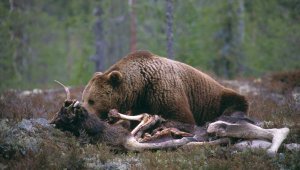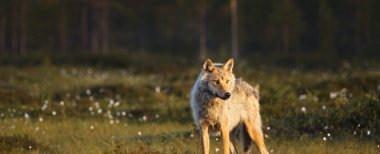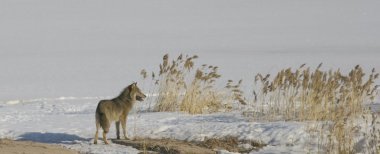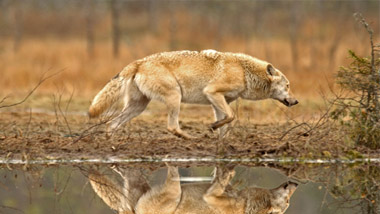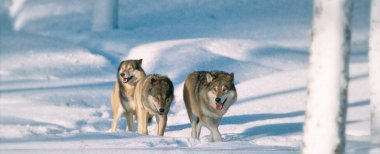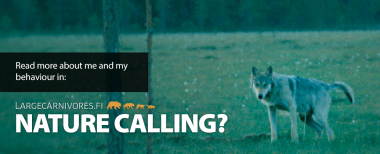Wolf hunting
Wolf hunting is only really possible when there is snow on the ground. The tracks in the snow tell the hunters where the wolves have settled for the day. When their location is known, the wolves are encircled in a circle that is large enough to ensure that the wolves are not scared off too early. When it is certain that the wolves have been completely surrounded, the encirclement is marked with flag line.
Method of estimating Finnish wolf population size has been evaluated
Fri Oct 21 10:36:00 2016
In population assessment, three complementary sets of data are used: observations made by large carnivore contact persons and by Luke’s own field staff (recorded in the Tassu system), territory boundaries by GPS collared wolves, and the analyses of DNA samples. Luke’s experts deduce the size of the wolf population by forming an expert opinion on the basis of these three data sets and separate checks performed in certain situations.
According to the evaluation report, the strength of the assessment method lies in its cost-efficiency and citizens’ participation in data collection. Its greatest weaknesses are related to the accuracy of observations made in field, the documentation of the analysis methods, and subjective choices regarding experts.
The report finds that sufficiently comprehensive documentation of the assessment method would help citizens to develop more trust in population assessments. The report praises the high professional standard of the experts conducting analyses, and their top-quality publications and active international collaboration, all of which create the framework for high-quality expert work.
The accuracy of observations could be ensured, for example, by checking a higher proportion of them. More observations are also required; as a result, a vital role continues to be played by voluntary citizen participation in the gathering of observations.
The development of population assessment can be modelled on best practices obtained from monitoring programmes used in Sweden and Norway, for example. However, this will require additional resources. The funding resources available for population assessment in our neighbouring countries may even be five times as high as Finland’s.
The international scientific evaluation was conducted by Professor Henrik Andrén from the Swedish University of Agricultural Sciences, Professor Mikkö Mönkkönen from the University of Jyväskylä, and Professor Otso Ovaskainen from the University of Helsinki. The evaluation was based on written documents, interviews and experiences gained from similar assessment methods used elsewhere in Europe.
Management plan for the Finnish wolf population
The population management plan for Finnish wolves approved in 2005 was the first of its kind. It was also the first wolf management plan to be renewed. The Finnish Wildlife Agency and Natural Resources Institute Finland worked together to create an updated management plan for wolf, which was then ap...
The Hunting Act and the relevant decrees
The bear, the wolf, the lynx and the wolverine are considered game animals. Legislation concerning game animals is laid out in the Hunting Act. More detailed provisions are found in the Hunting Decree, the Government Decree on Derogations Laid Down in the Hunting Act, and the species-specific Decree...
Sightings as the basis of population estimates
Natural Resources Institute Finland's (Luke) estimates on the numbers of animals are primarily based on sighting data collected by a volunteer organisation consisting of the contact persons of regional game management associations. Other utilised methods include on-the-ground censuses made by hunter...
